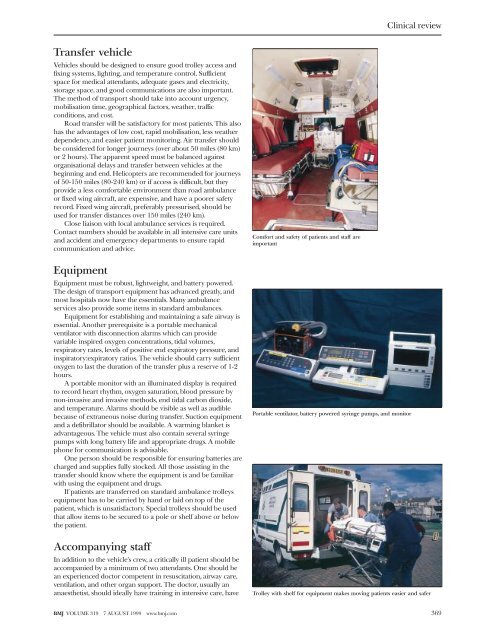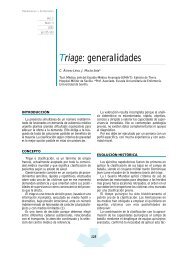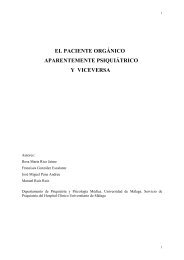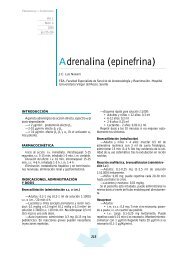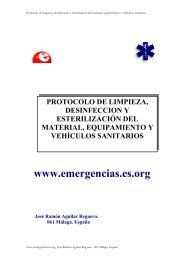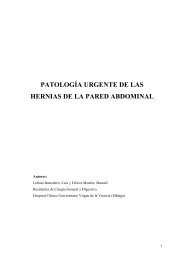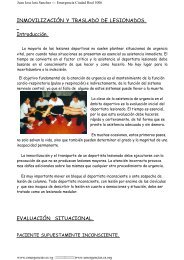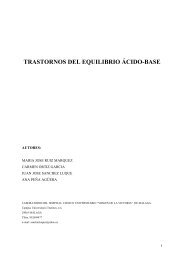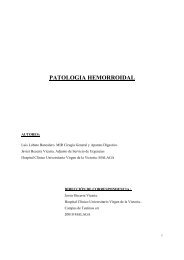ABC of intensive care Transport of critically ill patients
ABC of intensive care Transport of critically ill patients
ABC of intensive care Transport of critically ill patients
Create successful ePaper yourself
Turn your PDF publications into a flip-book with our unique Google optimized e-Paper software.
Transfer vehicle<br />
Vehicles should be designed to ensure good trolley access and<br />
fixing systems, lighting, and temperature control. Sufficient<br />
space for medical attendants, adequate gases and electricity,<br />
storage space, and good communications are also important.<br />
The method <strong>of</strong> transport should take into account urgency,<br />
mobilisation time, geographical factors, weather, traffic<br />
conditions, and cost.<br />
Road transfer w<strong>ill</strong> be satisfactory for most <strong>patients</strong>. This also<br />
has the advantages <strong>of</strong> low cost, rapid mobilisation, less weather<br />
dependency, and easier patient monitoring. Air transfer should<br />
be considered for longer journeys (over about 50 miles (80 km)<br />
or 2 hours). The apparent speed must be balanced against<br />
organisational delays and transfer between vehicles at the<br />
beginning and end. Helicopters are recommended for journeys<br />
<strong>of</strong> 50-150 miles (80-240 km) or if access is difficult, but they<br />
provide a less comfortable environment than road ambulance<br />
or fixed wing aircraft, are expensive, and have a poorer safety<br />
record. Fixed wing aircraft, preferably pressurised, should be<br />
used for transfer distances over 150 miles (240 km).<br />
Close liaison with local ambulance services is required.<br />
Contact numbers should be available in all <strong>intensive</strong> <strong>care</strong> units<br />
and accident and emergency departments to ensure rapid<br />
communication and advice.<br />
Equipment<br />
Equipment must be robust, lightweight, and battery powered.<br />
The design <strong>of</strong> transport equipment has advanced greatly, and<br />
most hospitals now have the essentials. Many ambulance<br />
services also provide some items in standard ambulances.<br />
Equipment for establishing and maintaining a safe airway is<br />
essential. Another prerequisite is a portable mechanical<br />
ventilator with disconnection alarms which can provide<br />
variable inspired oxygen concentrations, tidal volumes,<br />
respiratory rates, levels <strong>of</strong> positive end expiratory pressure, and<br />
inspiratory:expiratory ratios. The vehicle should carry sufficient<br />
oxygen to last the duration <strong>of</strong> the transfer plus a reserve <strong>of</strong> 1-2<br />
hours.<br />
A portable monitor with an <strong>ill</strong>uminated display is required<br />
to record heart rhythm, oxygen saturation, blood pressure by<br />
non-invasive and invasive methods, end tidal carbon dioxide,<br />
and temperature. Alarms should be visible as well as audible<br />
because <strong>of</strong> extraneous noise during transfer. Suction equipment<br />
and a defibr<strong>ill</strong>ator should be available. A warming blanket is<br />
advantageous. The vehicle must also contain several syringe<br />
pumps with long battery life and appropriate drugs. A mobile<br />
phone for communication is advisable.<br />
One person should be responsible for ensuring batteries are<br />
charged and supplies fully stocked. All those assisting in the<br />
transfer should know where the equipment is and be familiar<br />
with using the equipment and drugs.<br />
If <strong>patients</strong> are transferred on standard ambulance trolleys<br />
equipment has to be carried by hand or laid on top <strong>of</strong> the<br />
patient, which is unsatisfactory. Special trolleys should be used<br />
that allow items to be secured to a pole or shelf above or below<br />
the patient.<br />
Accompanying staff<br />
In addition to the vehicle’s crew, a <strong>critically</strong> <strong>ill</strong> patient should be<br />
accompanied by a minimum <strong>of</strong> two attendants. One should be<br />
an experienced doctor competent in resuscitation, airway <strong>care</strong>,<br />
ventilation, and other organ support. The doctor, usually an<br />
anaesthetist, should ideally have training in <strong>intensive</strong> <strong>care</strong>, have<br />
BMJ VOLUME 319 7 AUGUST 1999 www.bmj.com<br />
Comfort and safety <strong>of</strong> <strong>patients</strong> and staff are<br />
important<br />
Portable ventilator, battery powered syringe pumps, and monitor<br />
Clinical review<br />
Trolley with shelf for equipment makes moving <strong>patients</strong> easier and safer<br />
369


